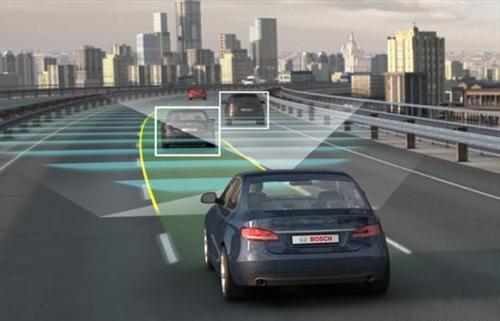Huawei Technologies is designing the communications architecture for a new generation of “autonomous” cars which will be connected to the high-speed internet, according to Eric Xu, the company’s chief executive.
华为(Huawei Technologies)轮值CEO徐直军(Eric Xu)称,公司正在为新一代自动驾驶汽车设计与高速互联网连接的通信架构。
The Chinese telecoms equipment maker hopes to have a series of technologies based on fifth-generation mobile networks commercially viable by 2020.
这家中国电信设备制造商希望,到2020年使一系列基于第五代移动网络的技术具备商业可行性。

The company, which rivals western telecoms equipment manufacturers led by Ericsson and Alcatel-Lucent, is allocating $600m in research and development spending for 5G networks.
与爱立信(Ericsson)、阿尔卡特-朗讯(Alcatel-Lucent)等西方电信设备制造商竞争的华为,将投入6亿美元研发5G技术。
Huawei is one of several technology companies, led by Google, pioneering the development of autonomous, or self-driving, cars alongside established carmakers such as Mercedes-Benz. “We are in close partnerships with car manufacturers to find their requirements for 5G,” said Mr Xu.
由谷歌(Google)领军的多家技术公司正在与奔驰(Mercedes-Benz)等老牌汽车生产商合作,率先开发自动或自主驾驶汽车,华为也是其中之一。“我们正在与汽车制造商紧密合作,找到他们对5G网络的需求,”徐直军称。
He added that Huawei has no plans to manufacture cars, but that it would design communications modules that will connect cars to networks – and eventually enable vehicles to be driven, at least partly, by remote control.
他补充称,华为现在还没有制造汽车的计划,不过它将研发通讯模块,使汽车接入网络,最终实现通过遥控来(至少在一定程度上)驾驶汽车。
The company is already by some measures the world’s leading manufacturer of the digital world’s architecture – mobile and fixed-line networks.
按照某些衡量标准,华为已经是全球领先的数字世界架构(含移动网络和固网)制造商。
Mr Xu, who shares the post of chief executive with two other men on a six-month rotation, said he was confident Huawei will be a leader in 5G networks.
徐直军与另外两人轮留担任华为CEO,每次任期为6个月。他称,他对华为领跑5G网络有信心。
The company announced last week that the first big test of its 5G mobile technology would come at the football World Cup in 2018, due to be held in Russia. The first commercial deployment is scheduled for 2020.
该公司上周宣布,其5G移动技术将在2018年世界杯(在俄罗斯举办)迎来第一场大考验。首个商业部署计划定于2020年展开。
Mr Xu said a crucial requirement for self-driving cars was low “latency” – a reference to the time it takes for data to travel to a third-party server and back – as this would reduce delays when making video calls, for example.
徐直军称,自主驾驶车辆的关键要求是低“时延”——数据输送至第三方服务器并传回的时间——打个比方,这会缩短视频电话的时延。
He added that 5G networks would ideally have a latency of one millisecond, compared with 40 to 80 milliseconds on 4G, to avoid collisions between cars.
他补充称,为避免汽车相撞,5G网络在理想状态下的时延为1毫秒(千分之一秒),相比之下,4G网络的时延为40-80毫秒。
“Having said that, I’m not sure we can deliver one millisecond in the end. Maybe five milliseconds. Maybe three milliseconds,” said Mr Xu.
“话虽如此,我不确定我们最终能否达到1毫秒时延的水平。也许是5毫秒,或者是3毫秒,”徐直军表示。













